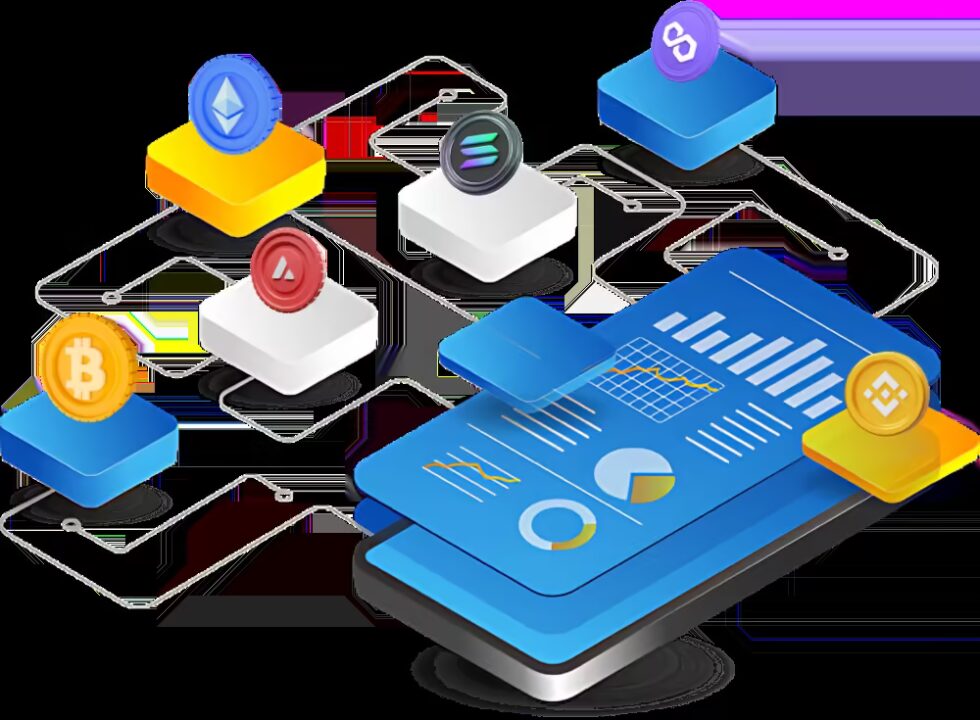
In the world of Web3, developers aren’t just writing code — they’re shaping the decentralized future. As blockchain ecosystems evolve from experimental playgrounds into full-scale infrastructure for finance, social media, gaming, and identity, the developer experience has taken center stage.
Gone are the days when building a decentralized app (dApp) meant cobbling together tools and hoping for the best. Today, a new wave of developer toolkits, SDKs, frameworks, and APIs is making it faster, easier, and more secure to launch next-gen dApps with production-grade quality.
So what’s under the hood of today’s most innovative dApps? Let’s explore the powerful toolkits transforming how Web3 is built — and what that means for the future of decentralized applications.
🚀 Why Developer Toolkits Matter in Web3
In Web2, developers rely on mature ecosystems like React, Firebase, and AWS to build scalable apps. Web3 demands similar abstraction — but with added complexity like smart contract deployment, wallet integration, and blockchain interoperability.
The new generation of developer toolkits solves for:
- Simplified smart contract development
- Secure wallet and identity integration
- Real-time blockchain data access
- Cross-chain functionality
- UX improvements like gasless transactions and seamless onboarding
These tools aren’t just conveniences — they’re enablers of mass adoption.
🛠️ 1. Foundry: Fast, Secure Smart Contract Development
Foundry is rapidly becoming the go-to framework for Ethereum developers who want speed, performance, and full control.
🔍 Why It’s Gaining Traction:
- Written in Rust, Foundry is faster than legacy tools like Truffle or Hardhat.
- Supports Forge (for testing and deployment) and Cast (for command-line interaction).
- Easy integration with EVM-compatible chains and Layer 2s.
- Great for protocol developers who prioritize robust testing and scripting.
Foundry’s rise signals a shift toward performance-first development for serious smart contract engineers.
⚙️ 2. Hardhat: Developer-Friendly & Extensible
While Foundry appeals to power users, Hardhat remains one of the most developer-friendly environments for building Ethereum-based dApps.
📦 Features:
- Local Ethereum network for testing and debugging.
- Plugin ecosystem with tools like Ethers.js, Waffle, and OpenZeppelin.
- Integration with front-end frameworks and CI/CD pipelines.
- Excellent documentation and wide community adoption.
For full-stack developers transitioning into Web3, Hardhat provides a gentle learning curve without compromising flexibility.
🔌 3. Thirdweb: Full-Stack Web3 in a Few Clicks
Thirdweb is pushing the limits of no-code/low-code development in Web3.
🎯 What It Offers:
- Prebuilt smart contracts (NFTs, tokens, marketplaces, DAOs) with easy customization.
- SDKs for JavaScript, React, Unity, and Python.
- Integrated wallet connectors and gasless transactions.
- Backend infrastructure like on-chain storage and serverless functions.
Whether you’re building a crypto game, NFT drop, or DAO dashboard, Thirdweb helps ship faster — making it ideal for startups and indie builders looking to prototype quickly.
🔗 4. WalletConnect & RainbowKit: Seamless Wallet Integration
No dApp is complete without wallet support, but integrating wallets has traditionally been a pain. Enter WalletConnect and RainbowKit — making it easy to onboard users and handle wallet logic.
💡 Why Developers Love It:
- RainbowKit (by the Rainbow team) is a polished UI kit for Ethereum wallets.
- Works seamlessly with WalletConnect, MetaMask, Coinbase Wallet, and more.
- Supports themes, custom chains, ENS, avatars, and account switching.
Together, these tools offer the best wallet UX layer for Web3 dApps today — critical for onboarding non-technical users.
🌉 5. Wagmi & Viem: The React Toolkit for Ethereum
Wagmi and Viem are two modern JavaScript libraries designed for interacting with EVM-compatible blockchains through React apps.
Key Benefits:
- Wagmi handles hooks like
useConnect,useContractRead, anduseAccountto simplify blockchain calls. - Viem, a lightweight replacement for Ethers.js/Web3.js, focuses on performance, modularity, and type safety.
The two work hand-in-hand to give developers the smoothest full-stack experience, from blockchain reads/writes to wallet interactions and UI integration.
📡 6. The Graph: Decentralized Data Indexing
For any dApp requiring structured data — like transaction histories, on-chain records, or user-generated content — The Graph is essential.
🔍 Use Case:
- Developers build and deploy subgraphs that index blockchain data.
- These subgraphs can then be queried with GraphQL, enabling fast, reliable access to decentralized data.
Used by Uniswap, Decentraland, and Lens Protocol, The Graph is the backbone of data access in Web3.
🧠 7. Moralis: Firebase for Web3
Moralis is a backend-as-a-service platform that gives Web3 developers real-time access to:
- User authentication (via wallets)
- On-chain event monitoring
- Token balances, NFTs, transaction history
- Cross-chain querying (EVM chains, Solana, etc.)
It abstracts the backend complexity so teams can focus on front-end experience and smart contract logic.
🔐 8. Lit Protocol & Privy: User Privacy and On-Chain Access Control
As Web3 applications scale, user privacy and permissioned access are becoming crucial.
- Lit Protocol enables decentralized access control using encryption tied to blockchain conditions. Great for token-gated content or private DAOs.
- Privy helps dApps manage personal data off-chain, offering email/social logins while still integrating with crypto wallets.
These toolkits are vital for onboarding mainstream users without compromising decentralization or compliance.
🎮 9. Unity SDKs for Web3 Gaming
Game developers are now integrating Web3 functionality directly into their builds with Unity-compatible SDKs.
- ChainSafe’s Web3.Unity SDK lets developers connect to Ethereum wallets and read/write on-chain data.
- Thirdweb’s Unity SDK adds NFT minting, marketplace support, and seamless login flows inside game engines.
With Web3 gaming on the rise, these toolkits are bridging the gap between blockchain and immersive gameplay.
🌐 10. Cross-Chain Dev Tools: Axelar, LayerZero, and Hyperlane
The future of dApps is multichain, and toolkits like:
- Axelar SDK
- LayerZero’s omnichain contracts
- Hyperlane protocol
are making it easier than ever to build dApps that interact across multiple chains — whether for liquidity, NFTs, or governance.
This wave of tools enables developers to go beyond Ethereum without fragmenting the user experience.
🧭 Final Thoughts: The Future Is Developer-First
The next wave of successful dApps won’t just be defined by tokenomics or hype — they’ll be usable, scalable, and thoughtfully built. And that starts with the developer experience.
These modern toolkits are reducing friction, improving security, and unlocking powerful new design patterns in decentralized applications.
If you’re a developer entering the Web3 space, now’s the time to explore these tools. Because in the decentralized future, those who build smart — win big.





